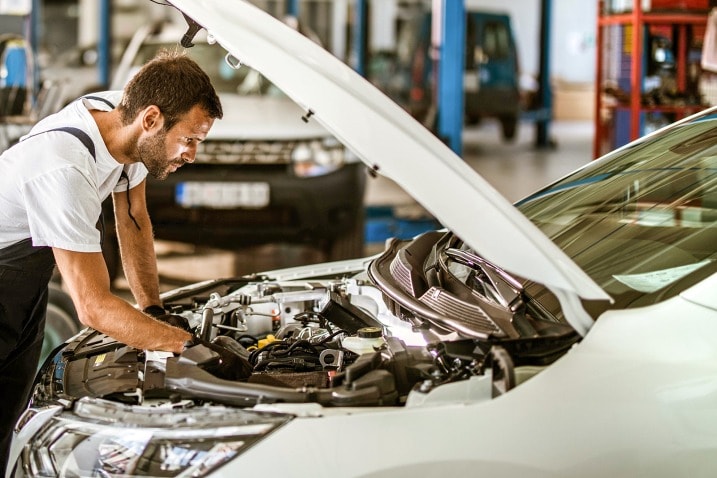All Categories
Featured
Your automobile's suspension system plays an essential function in delivering a secure and smooth adventure, making sure that you preserve control on different terrains. Follow these steps to ensure your suspension system continues to be in optimal problem.
![]()
Dripping Fluid: Shocks or struts might leakage oil when they're used. Harmed Springs: A drooping or uneven stance could suggest a busted springtime. Used Bushings or Sphere Joints: Cracks, tears, or uncommon activity throughout procedure recommend wear. Corrosion or Corrosion: In time, metal parts may wear away, leading to weakened parts. Resolve any type of issues without delay by seeking advice from a professional mechanic.
![]()
Feathered Footstep: Indicates inadequate positioning. Hairless Sides: Recommends worn shocks or struts causing extreme bouncing. Turn your tires routinely and maintain the right tire stress to reduce strain on the suspension system. 3. When Required, change Shocks and Struts. Struts and shocks are critical to your suspension's efficiency. Indications they require changing include:
A bouncy or harsh trip. Nose-diving when stopping. Extreme body roll when transforming. Changing these parts at the advised intervals (every 50,000 to 100,000 miles, relying on driving problems) can recover ride quality and handling.
Avoid driving over holes, curbs, and rate bumps at broadband. Take edges delicately to avoid too much lateral pressures. Decrease on harsh roads to lessen deterioration. 6. Arrange Routine Alignments. Wheel placement ensures that your tires and suspension work harmoniously. Misaligned wheels can create steering issues, unequal tire wear, and extra stress and anxiety on suspension parts. Set up an alignment examine annually or after hitting a significant hole.
![]()
Final thought. A properly maintained shock absorber enhances driving convenience, improves safety and security, and prolongs the life of your car. By staying aggressive with inspections, resolving issues immediately, and driving sensibly, you can preserve this important system for years to find. Invest in appropriate suspension maintenance today, and enjoy a safer, smoother adventure on every journey.

- Inspect Suspension Parts Routinely. Regular aesthetic evaluations can help determine prospective issues early. Look for the following indications:
Dripping Fluid: Shocks or struts might leakage oil when they're used. Harmed Springs: A drooping or uneven stance could suggest a busted springtime. Used Bushings or Sphere Joints: Cracks, tears, or uncommon activity throughout procedure recommend wear. Corrosion or Corrosion: In time, metal parts may wear away, leading to weakened parts. Resolve any type of issues without delay by seeking advice from a professional mechanic.

- Screen Tire Wear. Uneven tire wear commonly indicates suspension problems. For example:
Feathered Footstep: Indicates inadequate positioning. Hairless Sides: Recommends worn shocks or struts causing extreme bouncing. Turn your tires routinely and maintain the right tire stress to reduce strain on the suspension system. 3. When Required, change Shocks and Struts. Struts and shocks are critical to your suspension's efficiency. Indications they require changing include:
A bouncy or harsh trip. Nose-diving when stopping. Extreme body roll when transforming. Changing these parts at the advised intervals (every 50,000 to 100,000 miles, relying on driving problems) can recover ride quality and handling.
- Prevent Overloading Your Automobile. Overloading your car places unneeded stress and anxiety on the shock absorber. Surpassing your vehicle's weight ability can cause premature wear and minimized efficiency. Always check your proprietor's handbook for the maximum tons limitation and pack accordingly.
- Be Mindful of Your Driving Behaviors. Driving habits substantially impact the health of your suspension system. To reduce stress:
Avoid driving over holes, curbs, and rate bumps at broadband. Take edges delicately to avoid too much lateral pressures. Decrease on harsh roads to lessen deterioration. 6. Arrange Routine Alignments. Wheel placement ensures that your tires and suspension work harmoniously. Misaligned wheels can create steering issues, unequal tire wear, and extra stress and anxiety on suspension parts. Set up an alignment examine annually or after hitting a significant hole.
- Oil Relocating Parts. Some suspension elements, like ball joints and bushings, gain from periodic lubrication. This lowers friction, lessens wear, and expands their life-span. Inspect your proprietor's manual or consult your mechanic for specific lubrication recommendations.
- Focus On Routine Specialist Inspections. While DIY upkeep aids, specialist examinations are important for recognizing surprise issues. Professionals can assess hard-to-spot concerns like used control arms or hidden structural damages. Normal examinations likewise offer assurance, guaranteeing all parts are functioning appropriately.

Final thought. A properly maintained shock absorber enhances driving convenience, improves safety and security, and prolongs the life of your car. By staying aggressive with inspections, resolving issues immediately, and driving sensibly, you can preserve this important system for years to find. Invest in appropriate suspension maintenance today, and enjoy a safer, smoother adventure on every journey.
Latest Posts
Don’t Miss Special Auto Repair Specials in Chicago at Montclare Auto Repair
Published en
1 min read
Safeguard Your Investment with Professional Gutter Installment
Published en
1 min read
Discover the Storied Past of Deauville Inn: From Speakeasy to Seafood Haven
Published en
2 min read
More
Latest Posts
Don’t Miss Special Auto Repair Specials in Chicago at Montclare Auto Repair
Published May 25, 25
1 min read
Safeguard Your Investment with Professional Gutter Installment
Published May 22, 25
1 min read
Discover the Storied Past of Deauville Inn: From Speakeasy to Seafood Haven
Published May 20, 25
2 min read